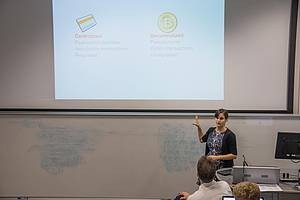Probably not too many academic researchers can say this: some of Steven Murdoch’s research leads have arrived in unmarked envelopes. Murdoch, who has moved to UCL from the University of Cambridge, works primarily in the areas of privacy and financial security, including a rare specialty you might call “crypto for the masses”. It’s the financial security aspect that produces the plain, brown envelopes and also what may be his most satisfying work, “Trying to help individuals when they’re having trouble with huge organisations”.
Murdoch’s work has a twist: “Usability is a security requirement,” he says. As a result, besides writing research papers and appearing as an expert witness, his past includes a successful start-up. Cronto, which developed a usable authentication device, was acquired by VASCO, a market leader in authentication and is now used by banks such as Commerzbank and Rabobank.
Developing the Cronto product was, he says, an iterative process that relied on real-world testing: “In research into privacy, if you build unusable system two things will go wrong,” he says. “One, people won’t use it, so there’s a smaller crowd to hide in.” This issue affects anonymising technologies such as Mixmaster and Mixminion. “In theory they have better security than Tor but no one is using them.” And two, he says, “People make mistakes.” A non-expert user of PGP, for example, can’t always accurately identify which parts of the message are signed and which aren’t.
The start-up experience taught Murdoch how difficult it is to get an idea from research prototype to product, not least because what works in a small case study may not when deployed at scale. “Selling privacy remains difficult,” he says, noting that Cronto had an easier time than some of its forerunners since the business model called for sales to large institutions. The biggest challenge, he says, was not consumer acceptance but making a convincing case that the predicted threats would materialise and that a small company could deliver an acceptable solution.
Continue reading Steven Murdoch – Privacy and Financial Security
 As a child,
As a child,